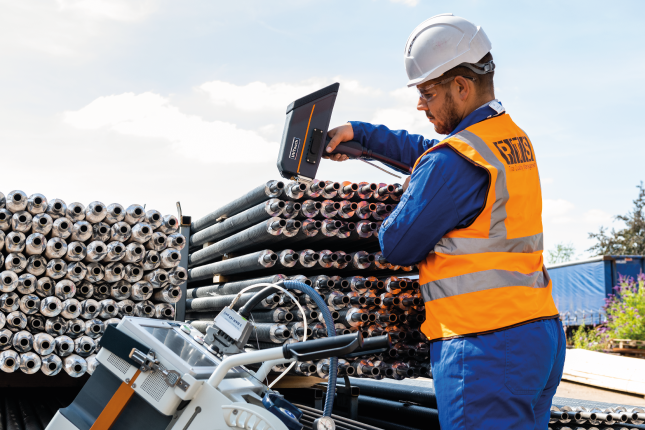Refineries, petrochemical, power and similar plants have stringent requirements for their metal components for a reason. The consequences of faulty or mismatched components can be catastrophic industrial accidents, plant shutdowns and serious disruption.
When 100% PMI (positive material identification) is a requirement, it doesn’t have to involve huge costs and lots of unnecessary downtime.
That’s why most companies choose either a handheld XRF (X-ray Fluorescence) or a portable OES (optical emission spectroscopy) analyzer as they are proven technologies. OES analyzers, like Hitachi High-Tech’s PMI-Master Smart, offer the highest levels of accuracy, with low levels of detection for all the major elements. If you want trustworthy identification of relevant elements in steel - here’s why you need to continue to use an OES analyzer:

Faulty analysis of carbon and L-grade stainless steels can lead to all sorts of difficulties. The carbon content of the substance not only determines its strength and its brittleness in application, but it affects how the metal can be worked (for example its weldability).
That’s why being able to quickly and accurately measure the carbon content of components is essential. High-temperature hydrogen attacks and flow accelerated corrosion are of particular concern to high-volume process plants.
The PMI-MASTER Smart portable OES analyzer is the best PMI solution for quick, reliable and accurate carbon measurement. With a UV Touch Probe, multi-CCD optics and the capability of displaying and storing data on the go, it can be used to test all kinds of metallic samples from huge pressure equipment, tubes and construction parts down to wires with a 1mm diameter. Results on even the lowest carbon values are available in less than 12 seconds, with a level of detection (LOD) right down to 30ppm.
OES is currently the only PMI technology that can measure nitrogen outside the laboratory. Like nickel, nitrogen is an austenite stabiliser which can add to significant strength to metal components. It’s becoming increasingly important, particularly with regards to duplex steels. As more companies are turning to duplex steels produced with nitrogen due to its cheaper cost and their outstanding properties, the need for fast and accurate analysis is becoming a safety critical requirement. If there is a high level of nitrogen loss, and a corresponding high level of ferrite formation during welding, mechanical performance and resistance to corrosion can be seriously impaired.
Duplex steels continue to be used in applications that are of central importance to operational safety, so operators must be able to guarantee their quality.
Boron is widely used as an alloying agent in materials used in the nuclear power industry since it has a high neutron absorption capability. As a result, it’s added to certain types of stainless steel for use in the nuclear industry as well as to improve the cutting performance of high-speed blades. The accuracy of the PMI-MASTER Smart means that it can pick up low levels of boron, down to a detection limit of 5ppm, as well as phosphorus, sulphur and tin, in low alloy and stainless steels. Once the measurement has been taken, the analyzer identifies the metal grade automatically and alerts the operator instantly if any concentration limits have been exceeded.
OES technology helps process plant operators like petrochemical, nuclear and other power plants ensure that their sites are built to last and withstand the pressure of intensive production. Welding together metal components with mismatched elemental properties is a key cause of corrosion or failure at welding seams and can put the safety of workers and the future operation of a site at risk. This problem is not a small one. In 2016, the cost of dealing with corrosion in oil and gas pipelines and facilities was estimated to be $589 billion a year in the US. By helping operators quickly identify welds that could cause problems, using OES technology can lead to significant savings across the industry as well as saving lives.
Corrosion is, however, just one element of plant safety. By being able to accurately measure the widest range of elements, OES analyzers are an effective inspection solution for plant operators. Hitachi High-Tech’s portable PMI-MASTER Smart can be carried wherever you need it. By giving you accurate results fast, operators can achieve the balance between making sure sites are completely safe and avoiding unnecessary disruption.
The PMI-MASTER Smart comes pre-calibrated with the GRADE database, the largest metals database available on the market. This makes grade identification easy and fast, as the database contains more than 12 million records for over 340,000 materials from 69 countries and standards. Just a few years ago these kind of databases would have to be updated manually, but GRADE can be updated in a few clicks.
With over 45 years of providing innovative analysis solutions to companies across the industrial sector, Hitachi High-Tech is a trusted and reliable solutions provider when it comes to operational safety.
Book a demo with the PMI-MASTER Smart, or talk to a member of our expert team about PMI inspection today.
Find out more